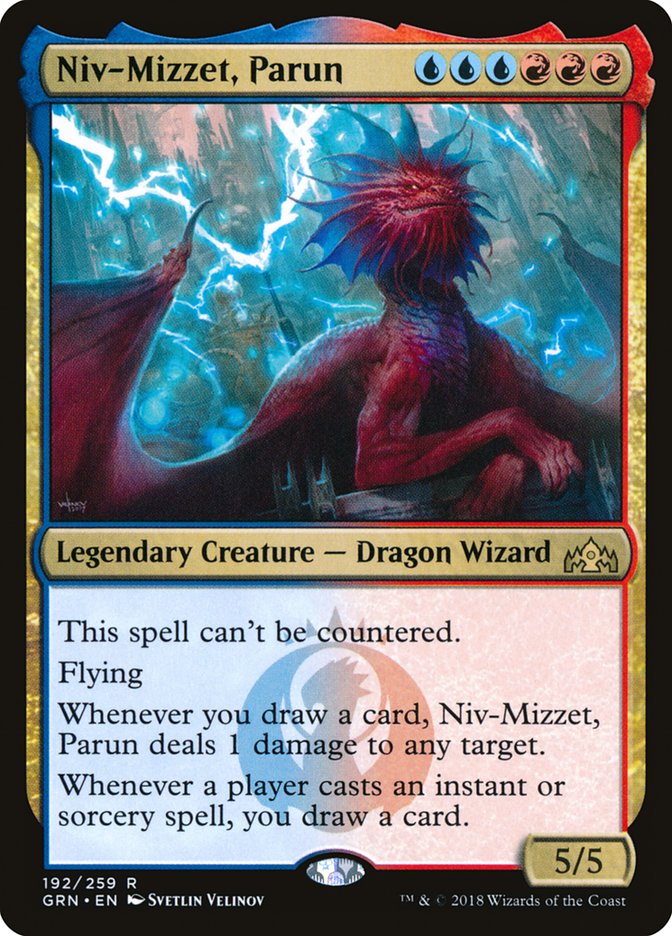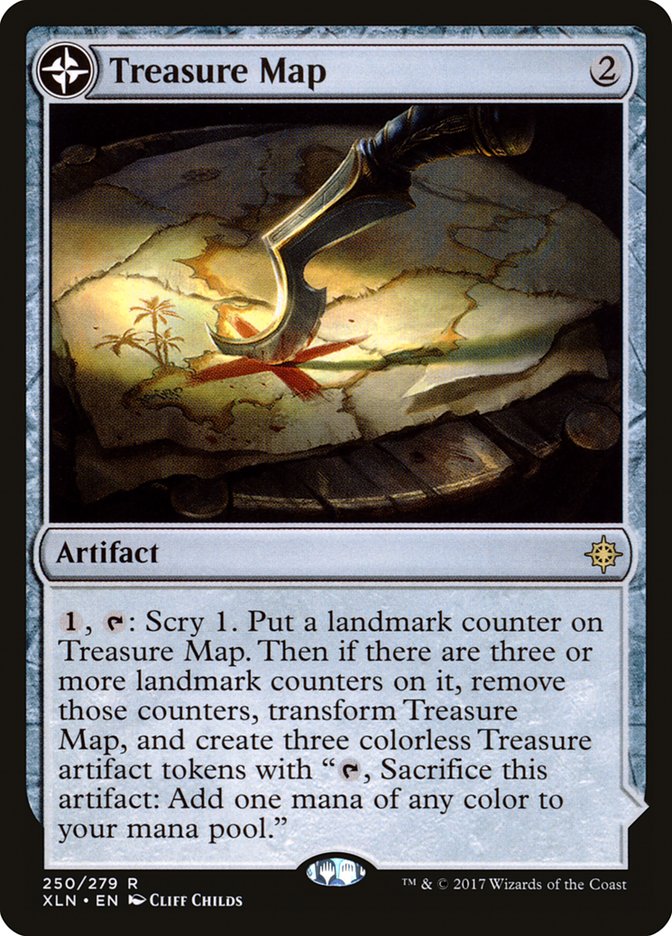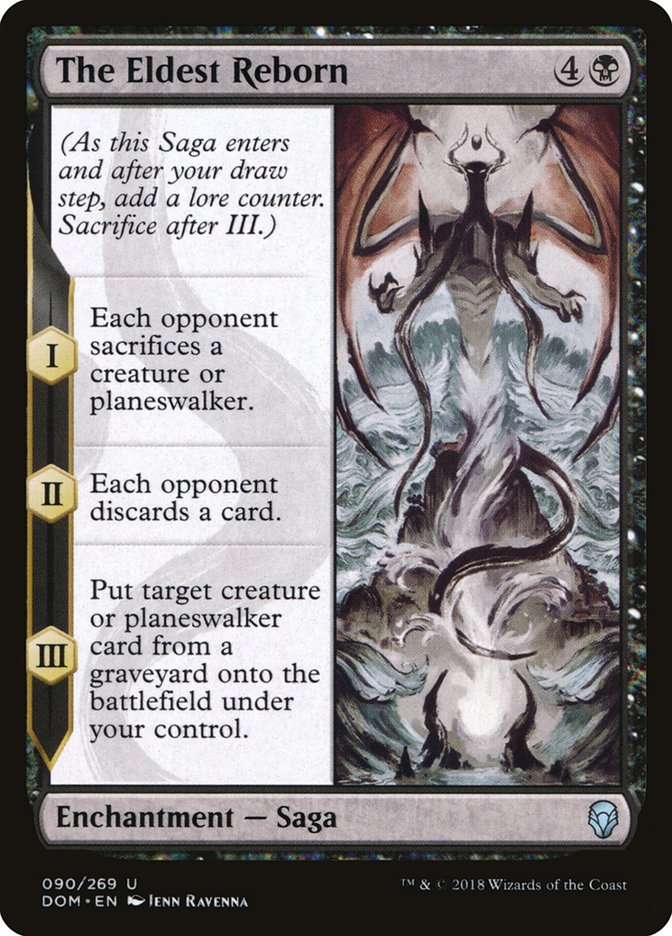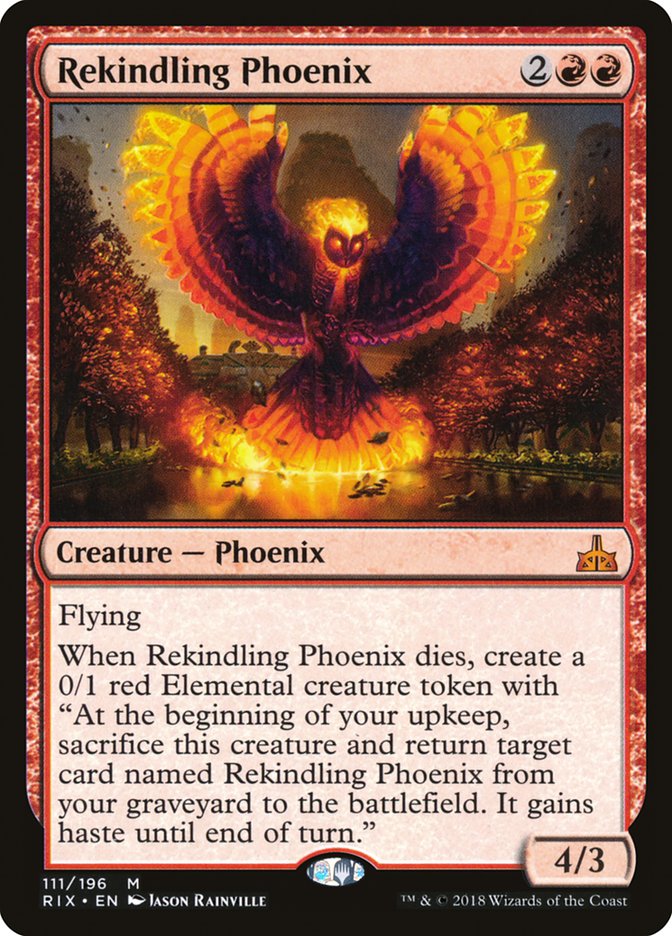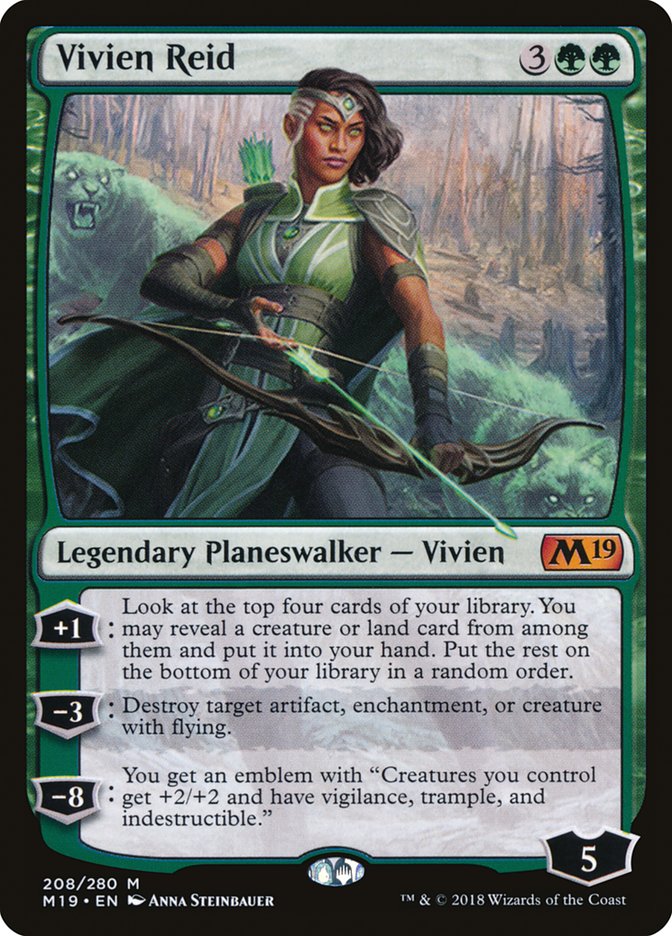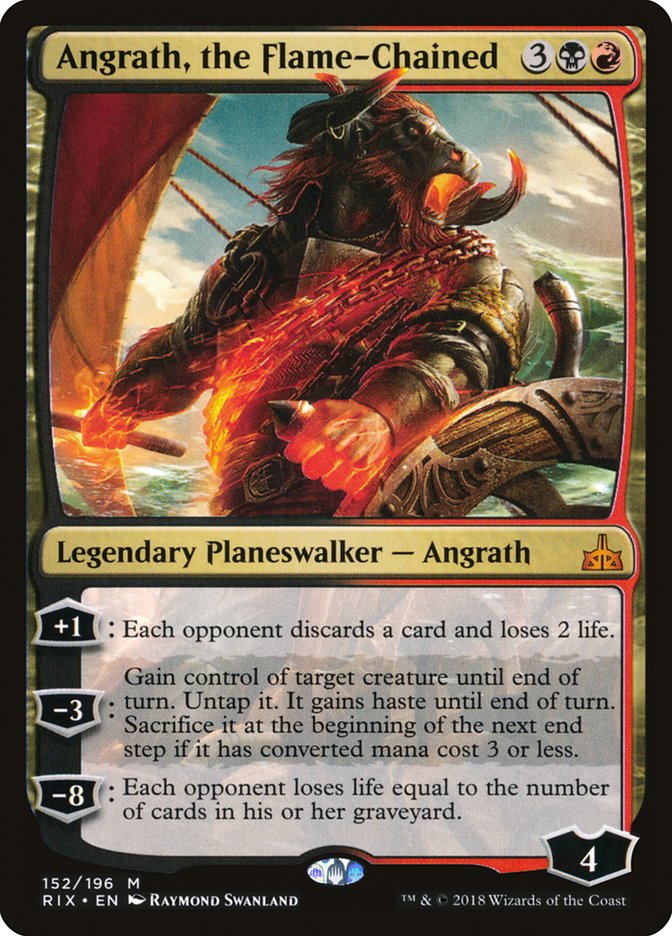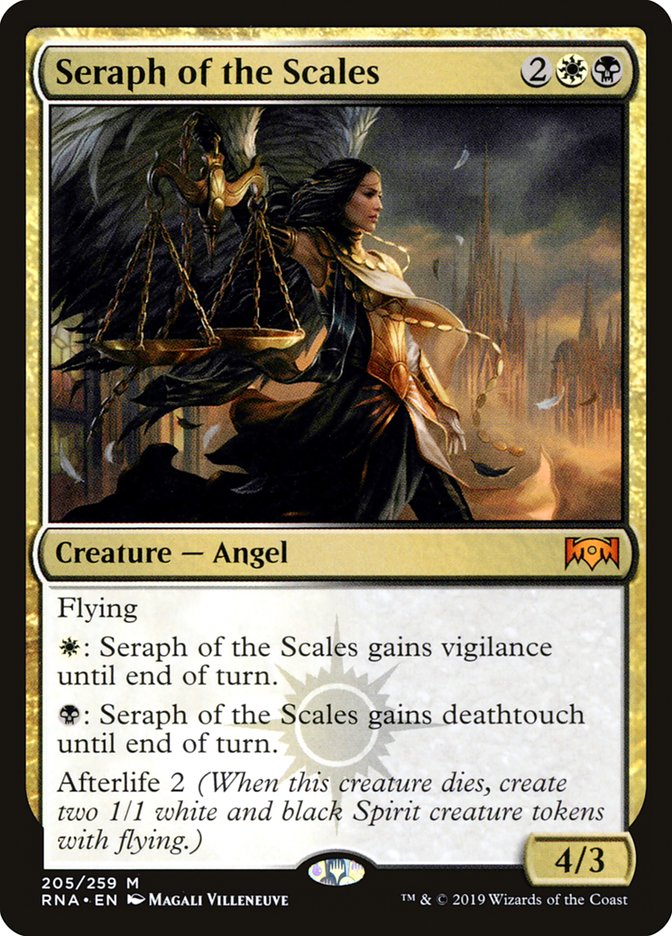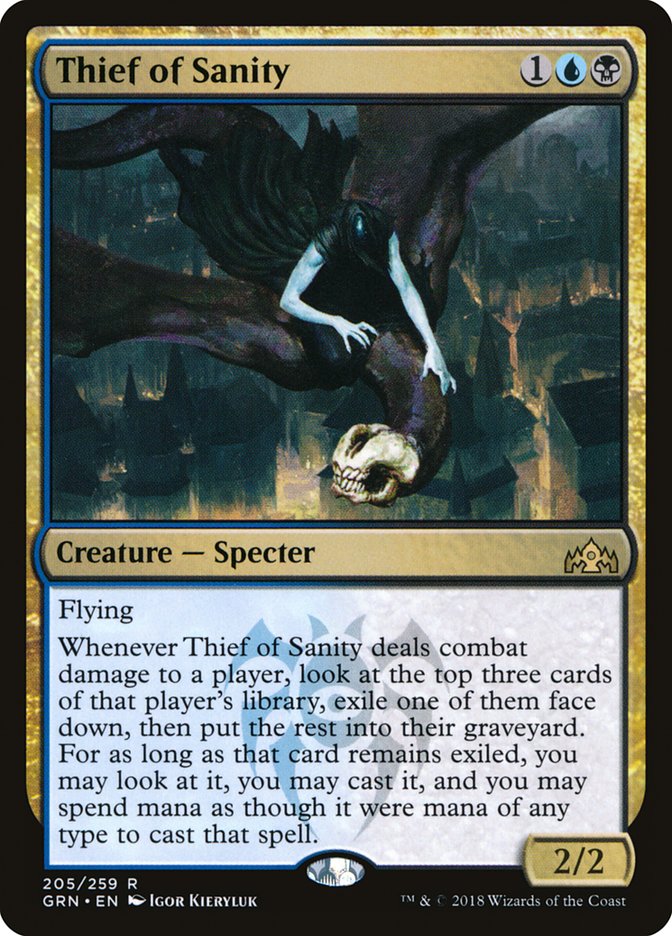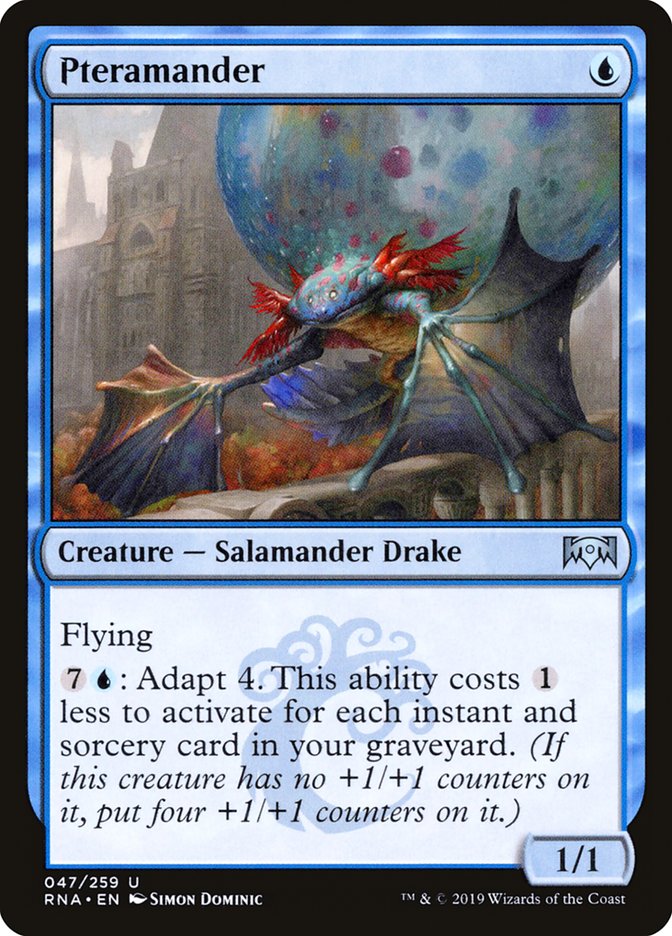Magic Arena is fantastic. I’ve spent the last week straight playing Standard – with a quick break to Top 8 a local Modern 5K with Dredge – and I’m really enjoying it. I know a lot of people have complaints about grinding the ladder and I personally am still stuck in Diamond, but I love having something like this to track overall progress. It just makes games feel way more meaningful.
Anyway, the point is that I’m about as plugged into Standard as it gets right now. I’ve played hundreds of matches with over twenty different decks while watching a variety of Standard streams and today I’d like to distill what I’ve learned into the cards that I’ve liked the most and give examples of decks that use them well.
8. Niv-Mizzet, Parun
I like to call Niv the Head Explosion Dragon based on my opponents’ propensity to concede the moment it’s placed upon the stack. I’ve been incredibly far behind against Mono-Blue Aggro, just getting beaten on every exchange throughout the game, and Niv-Mizzet can still immediately turn things around.
A lot of midrange and control matches can also drag on, and this is just the Dragon to take advantage of those spots. Niv-Mizzet’s casting cost is extremely restrictive, but a wide variety of decks can use it well.
Jonathan Job’s take on Drakes splashing Hydroid Krasis is a great way to approach the archetype, with Niv-Mizzet and Hydroid Krasis at the top to take advantage of the deck’s tendency to flood out eventually, and Niv obviously loves all the cheap cantrips the deck needs to support Pteramander and Crackling Drake.
Drakes is an example of the most natural possible fit for Niv-Mizzet, but at the other end of the spectrum, here’s a Jadelight Ranger deck that can also take advantage of the powerful Dragon.
Creatures (21)
- 4 Merfolk Branchwalker
- 4 Rekindling Phoenix
- 4 Jadelight Ranger
- 4 Hydroid Krasis
- 1 Ravager Wurm
- 1 Skarrgan Hellkite
- 3 Biogenic Ooze
Planeswalkers (2)
Lands (26)
Spells (11)
Sideboard

Decks like this that have a lot of lands and removal and just want to cast a big threat to end the game can often struggle against opposing control decks that can answer the big threat without too much trouble. This deck takes advantage of Treasure Map to find and easily cast Niv-Mizzet. Each card is independently great against control decks and they’re particularly fantastic in combination.
7. Treasure Map
Speaking of Treasure Map, it happens to be next on my list. While it’s a great sideboard card against control generally, offering both card and mana advantage that can be difficult for them to keep up with or interact with, I also love it as an option for midrange decks, especially those without blue or green.
One of my favorite decks is Rakdos Midrange, a deck where Treasure Map really shines:
Creatures (17)
- 4 Rekindling Phoenix
- 4 Dire Fleet Daredevil
- 4 Goblin Chainwhirler
- 4 Rix Maadi Reveler
- 1 Skarrgan Hellkite
Planeswalkers (3)
Lands (25)
Spells (15)

This deck has so much card advantage that I’ve comfortably won long games against control opponents with an active Search for Azcanta, and Treasure Map really shines when paired with this much cheap removal and the scry effect (along with Rix Maadi Reveler) do a great job of mitigating the issues with playing a lot of cards that are great in some matchups and pretty bad in others.
This deck actually uses fully half of the cards on my list, which isn’t a coincidence, of course. I like the deck because it uses the good cards well, and I like the cards because they work well in a good deck. That brings me to the next on my list:
6. The Eldest Reborn
Rakdos Midrange is a perfect home for The Eldest Reborn. Goblin Chainwhirler and other red removal spells are great at clearing all the creatures you don’t want your opponent to sacrifice so that the first chapter of The Eldest Reborn can kill the thing you really need to answer, like a huge creature or planeswalker. It’s also the single best answer to Niv-Mizzet by a pretty wide margin. Outside of Red decks, the other place where I’ve been really impressed with it is in this Esper Midrange deck:
Creatures (14)
Lands (22)
Spells (24)

Here, The Eldest Reborn’s purpose is largely to allow the deck to keep up with Teferi, Hero of Dominaria decks in the late game if they manage to stop you from running away with the early game with a Thief of Sanity. As a sideboard card, you don’t need to have an abundance of answers to cheap creatures to make the most of it, because you only bring it into your deck against opponents who only have high value cards that they’ll have to sacrifice.
Incidentally, this is another deck I’ve really liked. Surveil is really fantastic with Pteramander, adding Thought Erasure to the normal package of Opt and Discovery helps adapt Pteramander in a timely fashion, and the discard and protection spells pair perfectly with Thief of Sanity.
5. Rekindling Phoenix
Next on my list is a card you’ve already seen in my explore deck featuring Niv-Mizzet and Rakdos Midrange. Rekindling Phoenix is as good as it’s ever been. People play relatively few ways to exile it, largely because Spell Pierce and Dive Down are so punishing of Vraska’s Contempt and Mono-Blue is so popular that it’s hard to play a lot of those. A few people have Lava Coil, but those decks are still horrible against Rekindling Phoenix when they don’t draw Lava Coil.
Flying creatures are extremely important in this format, since they can attack over green decks and blue against blue decks. They are so good that Vivien Reid, Collision, Kraul Harpooner, and Crushing Canopy all see a reasonable amount of play. Rekindling Phoenix doesn’t really care about any of those, which kind of lets you get all the benefits of having a flying creature in your deck without the disadvantages of exposure to those cards.
Rekindling Phoenix is so good I often wonder if Drakes should be playing it over Crackling Drake. It can be hard to make the mana work smoothly for it in Gruul Aggro decks, but I think it’s worth working for, like in this deck:
Creatures (28)
- 4 Merfolk Branchwalker
- 4 Rekindling Phoenix
- 4 Jadelight Ranger
- 4 Gruul Spellbreaker
- 4 Skarrgan Hellkite
- 4 Growth-Chamber Guardian
- 4 Zhur-Taa Goblin
Lands (24)
Spells (8)
Sideboard

4. Vivien Reid
If every important creature has flying and most of the best cards are creatures, Viven Reid is an ideally positioned planeswalker. That it offers an answer to Wilderness Reclamation is a nice bonus.
Hydroid Krasis feels like the card that most pulls Vivien to the center of the format. As midrange battles come down to out-Krasising the other, Vivien’s ability to both find your own Krasis and kill your opponent’s makes Vivien the best thing you can be doing.
While Viven is just a sideboard card in COZYMA’s Gruul Aggro deck – it makes sense there, as the aggro deck is looking to kill the opponent before they get to their big end game, and a 4/4 creature with flying and haste is better at doing that than a planeswalker that puts cards in your hand – in midrange decks, Vivien is not just a maindeck card, but really a linchpin of the archetype. Dylan Donegan’s Top 8 deck from SCG Dallas is a typical example of a deck whose purpose can really be understood as maximizing Vivien, who has overtaken Vraska, Relic Seeker as the premier planeswalker in the strategy.
I’d love to live in a world where we could take advantage of how beautifully The Mending of Dominaria works with Hydroid Krasis, but Vivien is just too good in a Krasis world (and also happens to trump The Mending of Dominaria in the heads up).
3. Angrath, the Flame-Chained
After all that talk about Vivien’s central role in the format, it might be surprising to see another five-mana planeswalker higher on the list. I want to be clear that this isn’t a ranking of the best cards in Standard; these are cards that have stood out as better than I expected or better than they were historically, with, honestly, a heavy bias toward cards I wanted to say something about. A more objective list of great cards in this Standard format that might be better than they appear or that are particularly defining of the current moment would, for example, certainly include cards like Curious Obsession and Hydroid Krasis, but I think everyone has a pretty clear understanding of just how great those cards are and where to use them.
Angrath shares a commonality with Vivien in that it’s also propped up by being a fantastic answer to Hydroid Krasis; even better usually, since it can potentially come down first and answer a Krasis before your opponent even casts it. But, more importantly, you get a good chunk of damage when killing a Krasis with Angrath, which often means they’re dead before they get to use the cards they drew.
Thief of Sanity is another popular creature that both cards answer, but Thief of Sanity gives you another extremely satisfying parting gift on the way out when you kill it with Angrath. When not killing surprisingly high impact creatures with considerable upside, Angrath enjoys tearing apart control decks.
It’s a great finisher in decks like Rakdos Midrange, but it’s really blown me away as a sideboard card out of Rakdos Aggro:
Creatures (22)
- 2 Rekindling Phoenix
- 4 Fanatical Firebrand
- 4 Ghitu Lavarunner
- 4 Goblin Chainwhirler
- 4 Viashino Pyromancer
- 4 Rix Maadi Reveler
Lands (22)
Spells (16)

This barely larger than normal Rakdos Aggro deck is built to have a little more staying power in Game 1, mostly to allow it to more smoothly transform into a control deck after sideboarding to punish people who react to your Game 1 strategy by filling their deck with low-impact lifegain and removal. Angrath is particularly capable of winning a game very easily when your opponent biases their deck too far toward trying to answer your creatures.
2. Seraph of the Scales
If the format is about fliers and their attempts to avoid getting trumped by Vivien Reid, Seraph of the Scales is another, like Rekindling Phoenix, that doesn’t require outside assistance to combat the planeswalker, as the two Spirits happen to have exactly enough power to finish off the remaining loyalty from a freshly cast Vivien.
Seraph of the Scales didn’t look like much when I first saw it. 4/3 is a small body for four mana and I didn’t know how good two 1/1s would be, and I’m used to everything getting exiled half the time anyway, but its position against Mono-Blue makes it one of the cards I most want to play.
Seraph of the Scales is an absolute nightmare for them. Deathtouch means that they can’t save their Tempest Djinn in combat with a Dive Down, and vigilance means it gets to clock them while holding the fort. And when it does trade, those two 1/1 fliers matter against Mono-Blue. I thought Rekindling Phoenix was where I wanted to be against them, but the addition of vigilance really is an absolute game changer.
It’s easy to look at Seraph of the Scales and not really know what the purpose is and choose other cards over it, but I strongly recommend playing four of these in any deck that can cast them and wants a four-mana creature. It rounds out the twelve core creatures beautifully in my Esper Pteramander deck.
While no work is required to take advantage of Seraph of the Scales’s afterlife, it’s certainly possible to build a deck that does if you want to, like this updated Mardu Visitation deck:
Creatures (27)
- 4 Legion Warboss
- 4 Imperious Oligarch
- 3 Judith, the Scourge Diva
- 4 Seraph of the Scales
- 4 Hero of Precinct One
- 4 Priest of Forgotten Gods
- 4 Footlight Fiend
Lands (24)
Spells (9)

1. Thief of Sanity
In a format with as many great fliers as Standard has right now, you wouldn’t really expect a 2/2 flier that needs to hit your opponent to perform very well, which is why I’m so surprised by Thief of Sanity. Even my decks that are generally very good at answering Thief of Sanity still just happen to not draw an answer and lose very badly to it sometimes. It just runs away with a game quickly if your opponent doesn’t have an answer.
Thief of Sanity is at its best in a deck like the Esper Pteramander deck above, since that deck can protect it with Duress, Thought Erasure, Spell Pierce, and Dive Down, and can clear a path for it to connect with Cast Down and Mortify. I’ve hadmany games end extremely quickly against Sultai Midrange or Simic Nexis because I cast Thief of Sanity on Turn 3.
Thief of Sanity’s really defining role in the format is in the sideboard of Esper Control. Everyone knows that every Esper player will sideboard in four Thief of Sanity in almost every matchup, but it’s still great because you just can’t afford to leave very many answers to it in your deck against the rest of their cards.
What really blows me away is that the card is generically good enough to perform well in Sultai Midrange, as seen in Martin Juza’s stream with this:
Creatures (18)
- 4 Llanowar Elves
- 2 Hostage Taker
- 2 Jadelight Ranger
- 4 Thief of Sanity
- 4 Hydroid Krasis
- 2 Incubation Druid
Planeswalkers (5)
Lands (25)
Spells (12)
Sideboard

Honorable Mention: Pteramander
When I saw Pteramander I thought it was a fine option for Mono-Blue, but I certainly didn’t anticipate how transformative it would be for that deck or how incredible it could be in other decks. I’m still skeptical of this card in older formats, but it’s amazing in Standard.


